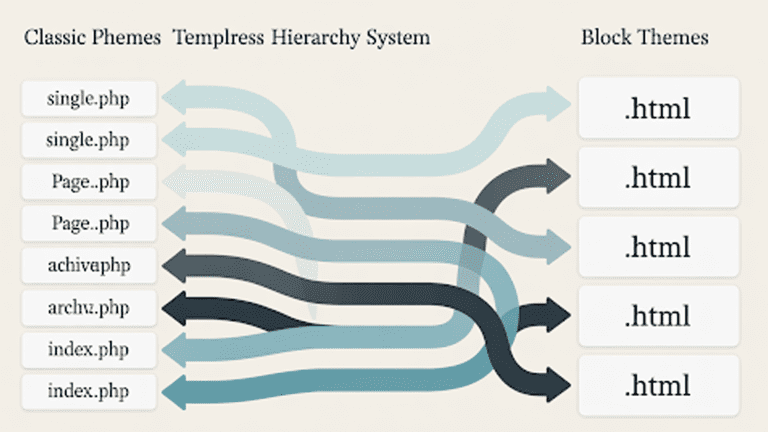If you’re planning to build a website or migrate an old one, you’ve probably seen the names AngularJS and Angular 16. They sound similar. They both have “Angular” in the name. But don’t let that confuse you. These two are as different as a landline and a modern smartphone.
AngularJS is an older, legacy framework that some developers still maintain. Angular 16, on the other hand, is one of the most recent versions of Google’s completely reimagined framework for building fast, modern web apps. So the big question is this: which one should you choose? Here’s the breakdown that clears it all up..
What Is AngularJS?
AngularJS is the original version. It came out in 2010. Back then, websites were basic. Developers needed something to make them feel smoother and more dynamic. AngularJS did that.
It runs on JavaScript. It uses something called the Model-View-Controller setup. In simple terms, that means you write one part for data, one part for what users see, and one part to connect the two. It helped websites act more like apps.
Key Features of AngularJS
- JavaScript-Based: Built with plain JavaScript.
- Two-Way Data Binding: If your data changes, the screen updates instantly. If a user types something, the data updates too.
- Controllers and $scope: These handle logic and hold data.
- Dependency Injection: Easier to manage pieces of code.
Who Still Uses It?
Some older enterprise apps still use AngularJS. But Google stopped supporting it officially in 2022. That means no updates, no fixes. It’s like using a phone that no longer gets security patches.
Strengths and Weak Points of AngularJS
| Strengths | Weak Points |
| Simple for beginners to grasp | No longer supported by Google |
| Ideal for small or short-term apps | Sluggish with large-scale applications |
| Two-way data binding feels responsive | Doesn’t support mobile-friendly layout |
| Quick setup and development | Lacks modern SEO support and tooling options |
Want a clearer path forward? Connect with Pure Website Design. We specialize in precise AngularJS to Angular 16 migrations, combining smooth performance, secure coding, and modern UX. From mobile-friendly web design to full web portal development, we’ve got your back every step of the way.
Tell Us What You Need – Start Your Journey Today!
Share your project requirements, and we’ll guide you through a seamless development journey to bring your ideas to life.
What Is Angular 16?
Angular 16 is the newest and smartest version of Angular. It isn’t just a better version of AngularJS, it’s a whole different setup built from scratch.
This one is built for how things work today. It’s fast, secure, and super smooth to use. Developers love it because it gives them better control, helps get things done quicker, and avoids all that messy stuff that slows down progress.
Angular 16 works with TypeScript. You can think of it like JavaScript’s smarter cousin. It helps catch mistakes before they cause problems. That means fewer bugs, cleaner code, and a lot less stress for the people building your site.
You know those websites that open fast, look good on your phone, and don’t randomly crash? There’s a good chance they’re using something like Angular 16. It’s made to work well for both users and developers, no matter what kind of screen you’re on or how big the app gets.
Key Features of Angular 16
- TypeScript-Based: More structured, easier to catch errors.
- Component-Based: Everything is split into reusable blocks.
- CLI (Command Line Interface): You can generate code fast with simple commands.
- Built-In Routing: Smooth navigation between pages.
- Signals: New way of tracking reactive data.
- Faster Performance: Built for speed.
- Server-Side Rendering: Better for SEO and load times.
Angular 16 is not just an upgrade. It’s the future. It works better, runs faster, and fits the modern needs of users and developers.
Strengths and Weak Points of AngularJS
| Strengths | Weak Points |
| Excellent speed and smooth performance | Slightly steeper learning curve |
| Works well on all devices and screen sizes | More setup time compared to basic tools |
| Great support for SEO and user experience | Requires understanding of TypeScript |
| Clean structure makes code easier to manage |
AngularJS vs Angular: What Are the Differences?
For a simple breakdown, think of it like this: Sending a message through AngularJS is like using a postman. It might get delivered eventually, but it’s slow, outdated, and far from efficient. Angular 16, on the other hand, is like sending that same message through a smartphone. Fast, seamless, and built for today’s world.
That’s the kind of leap we’re talking about between AngularJS and Angular 16.
To make it even clearer, here’s a comparison table that highlights the key differences:
| Feature | AngularJS | Angular 16 |
| Language | JavaScript | TypeScript |
| Architecture | MVC (Model-View-Controller) | Component-Based |
| Mobile Support | None | Full Native + PWA Support |
| Speed | Slower | Much Faster |
| Tooling | Manual | Modern CLI and DevTools |
| SEO Support | Weak | Strong (SSR, pre-rendering) |
| Community & Support | Minimal (since 2022) | Active and Evolving |
| Learning Curve | Easier for beginners | Slightly harder, but more powerful |
Is Angular and AngularJS Same?
No, they are not. This is one of the biggest misconceptions.
They may share a name, but they don’t share much else. AngularJS is like the first draft of a story. Angular 16 is the final published book, printed in high quality and sold worldwide.
Even Google (who made both) treats them as different tools. They have separate documentation, communities, and support lifecycles.
Why Should You Migrate from AngularJS to Angular 16?
Still on AngularJS? You’re sitting on a ticking clock. It’s no longer supported. That means security risks, outdated features, and a shrinking pool of developers who know how to fix it.
On the flip side, Angular 16 comes with power, speed, and stability. Plus, new features like signals and server-side rendering make it future-proof. Most of today’s top-performing apps use it.
If you’re building a project for the future, start with Angular 16. If you’re stuck on AngularJS, it’s time to migrate.
If you’re thinking of making the shift, Pure Website Design is here to help. Our team has guided many businesses through smooth, stress-free migrations, turning outdated systems into fast, scalable, and user-friendly websites that deliver results.
How to Decide: AngularJS vs Angular 16 in 2025
Here’s a simple test. If your project was built more than 10 years ago and hasn’t had major updates, you’re likely using AngularJS.
If you’re planning to:
- Add mobile support
- Improve SEO
- Speed up performance
- Get better security
- Work with modern developers
Then Angular 16 is your answer.
A School Portal Setup: Case Study
You are building a school portal. With AngularJS, it’s like working with old broken toy blocks. Pages lag, layout is messy, and phones struggle to load anything. It just feels off.
Switch to Angular 16. Everything is smooth, fast, and clean. The pages load quickly. Students and teachers use it without any glitches.
So now ask yourself, who would you trust to build that portal? Someone using tools from 10 years ago, or someone using new tools that actually work? Pure Website Design uses Angular 16, speeds up your site with WordPress CDN, and makes sure it works great on any device.
Tell Us What You Need – Start Your Journey Today!
Share your project requirements, and we’ll guide you through a seamless development journey to bring your ideas to life.
How Angular Compares to React in Performance
Another question we get a lot: Angular vs React performance.
React is faster at small things. Angular 16 is better for bigger, more structured apps. If you’re running a simple blog, React might win. But if you’re building something like a healthcare portal or e-learning platform, Angular holds better in the long run.
And yes, Pure Website Design can help you decide, implement, and manage the right framework. From Web Portal Development to WordPress Maintenance, their team keeps your site stable and sharp.
FAQs:
Why should I upgrade to Angular 16 if AngularJS still works for me?
Because AngularJS is no longer supported. That means you are not getting any updates, no fixes, and no protection from future security problems. Angular 16 is faster, safer, and better for long-term projects.
What’s the main difference between AngularJS and Angular 17?
AngularJS runs on JavaScript and uses the MVC pattern. Angular 17 (and even Angular 16) runs on TypeScript and is component-based. It performs faster and has more advanced features like server-side rendering.
Why did Google stop supporting AngularJS?
Google ended support to encourage developers to move to safer and faster frameworks. AngularJS had performance and security limits that couldn’t be fixed without a full rebuild. That’s why Angular exists now.
How do I move from AngularJS to Angular 16?
You’ve got a few paths. Some teams rewrite the app from scratch. Others use hybrid setups or micro frontends. It starts with setting up Angular 16, linking both versions, and then moving your components and services piece by piece.
Can I use AngularJS for the backend of my app?
No, AngularJS is only for the front end. It handles what users see and interact with. You’ll still need a backend system like Node.js, Django, or Laravel.
Is Angular 16 outdated now?
Yes, as of November 8, 2024, Angular 16 reached its end-of-life. But it still runs fine and is used in many apps. Angular 17 is the latest, but upgrading depends on your app’s needs.
Can I use AngularJS and Angular in the same project?
Yes, but only during migration. You can use something called “dual booting” with tools like ngUpgrade to run both at once. It’s temporary and meant to help you shift from old to new smoothly.
Does AngularJS support async tasks like loading data in the background?
Yes, AngularJS supports asynchronous behavior. But it’s less flexible and modern compared to how Angular handles it today.
Where can I find a service that helps with Angular migration and web design?
You can talk to Pure Website Design. They handle full AngularJS to Angular 16 or 17 upgrades, and they back it up with WordPress Maintenance and mobile-friendly web design. They make sure nothing breaks in the process.
Why should I trust Pure Website Design for my Angular project?
Because we’ve done it many times. Whether you're moving away from AngularJS or building something fresh in Angular 16 or 17, we offer clear guidance and support. We also handle things like SEO, structure, and hosting, so you’re not left guessing.
Final Verdict: Use Angular 16 in 2025
AngularJS had its moment. But that moment passed. Angular 16 is built for now. It supports big apps, fast performance, and modern features. If you’re thinking about your next step. Whether it’s a brand-new project or a full migration, go with Angular 16.
And if all this still feels tricky, that’s where Pure Website Design steps in. They offer tailored support for modern builds. From choosing Angular 16 to handling web portal development or setting up your WordPress CDN, they’ve got your back.




